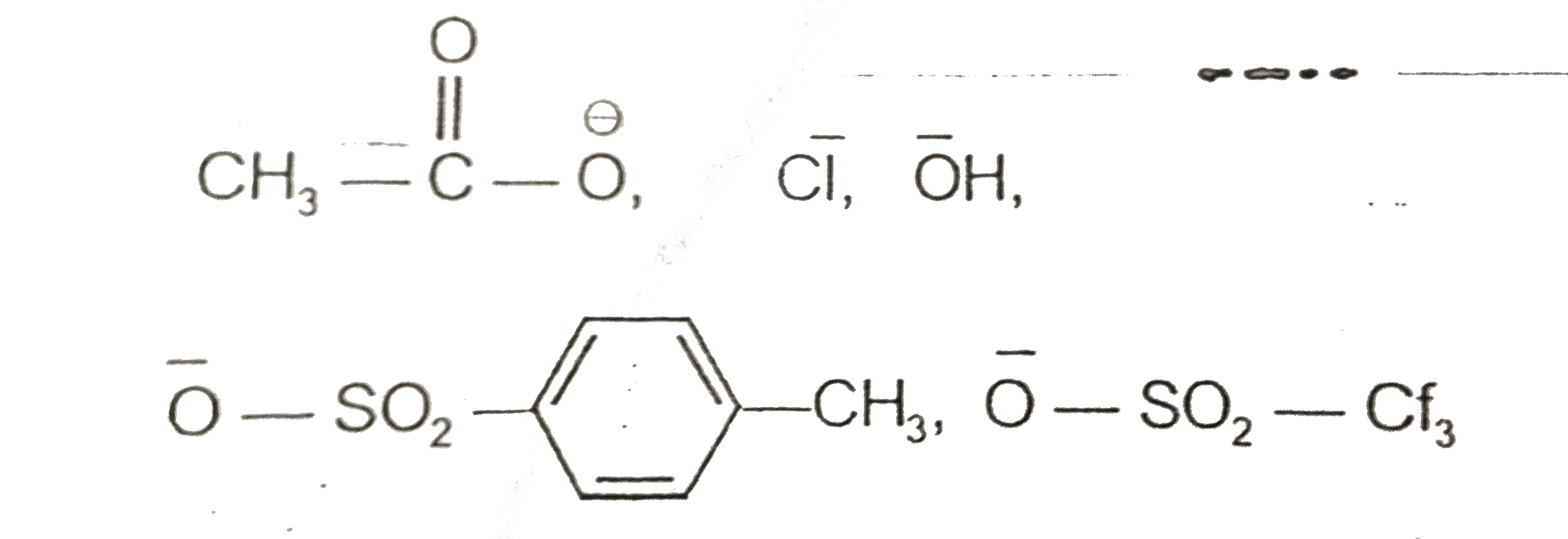The order of leaving group ability is :
i>ii>iii>iv
iv>iii>i>ii
iii>ii>i>iv
ii>iii>iv>i
The correct Answer is:B
Leaving power depends on stability of group.
Topper's Solved these Questions
- BOOK - RESONANCE ENGLISHCHAPTER - FUNDAMENTAL CONCEPTEXERCISE - Inorganic chemistry (Chemistry Bonding)6videos
FUNDAMENTAL CONCEPT
- BOOK - RESONANCE ENGLISHCHAPTER - EQUIVALENT CONCEPT & TITRATIONSEXERCISE - Part -IV22videos
EQUIVALENT CONCEPT & TITRATIONS
- BOOK - RESONANCE ENGLISHCHAPTER - GASEOUS STATEEXERCISE - Exercise-31videos
GASEOUS STATE
Similar Questions
Knowledge Check
- Question 1 - Select One
Correct order of leaving group tendency is :
AI−>Br−>Cl−>F−BF−>Cl−>Br−>I−CCl−>F−>Br−>I−DI−>Cl−>Br−>F− - Question 2 - Select One
Consider the following anions.

When attached to sp -hybridized carbon, their leaving group ability in nucleophilic substitution reaction decreases in the order :AI gt II gt III gt IVBI gt II gtIV gt IIICIV gt I gt II gt IIIDIV gt III gt II gtI
Assertion: In the case of polyfunctional compounds, the choice of principal functional group is made on the basis of order of preference.
Reason: The order of decreasing priority for some functional group is
 View Solution
View SolutionThe leaving group is that functional group which is ejected with ¯e,s of the σ -bond in a reaction. Better the leaving group, faster is the reaction. The relative leaving ability of the leaving group X in (R−X) is increased by :
(i) The polarisability of (R−X) bond.
(ii) The stability of XӨ.
(iii) The degree of stabilisation through solvation of X.
(iv) The strength of (R−X) bond.
The leaving group tendency is also called fugacity.
Which of the following is the wrong order of fugacity ?View SolutionThe leaving group is that functional group which is ejected with ¯e,s of the σ -bond in a reaction. Better the leaving group, faster is the reaction. The relative leaving ability of the leaving group X in (R−X) is increased by :
(i) The polarisability of (R−X) bond.
(ii) The stability of XӨ.
(iii) The degree of stabilisation through solvation of X.
(iv) The strength of (R−X) bond.
The leaving group tendency is also called fugacity.
Which of the following undergoes SN reaction easily ?View SolutionThe leaving group is that functional group which is ejected with ¯e,s of the σ -bond in a reaction. Better the leaving group, faster is the reaction. The relative leaving ability of the leaving group X in (R−X) is increased by :
(i) The polarisability of (R−X) bond.
(ii) The stability of XӨ.
(iii) The degree of stabilisation through solvation of X.
(iv) The strength of (R−X) bond.
The leaving group tendency is also called fugacity.
Which statement is correct ?View SolutionThe leaving group is that functional group which is ejected with ¯e,s of the σ -bond in a reaction. Better the leaving group, faster is the reaction. The relative leaving ability of the leaving group X in (R−X) is increased by :
(i) The polarisability of (R−X) bond.
(ii) The stability of XӨ.
(iii) The degree of stabilisation through solvation of X.
(iv) The strength of (R−X) bond.
The leaving group tendency is also called fugacity.
Which one of the followingd has the highest fugacity ?View SolutionThe elimination reactions mainly involve three mechanism E1,E2 and E1cB. If the leaving group departs before β-proton (HΘ ion) then it is E1 mechanism. If proton is taken off first before leaving group it is E1cB mechanism.The pure E2 involves both β-Hydrogen and leaving group departing simutaneously. If acidity of β-Hydrogen increases and leaving group ability decreases then E1cB mechanism increases.

Product P isView Solution


